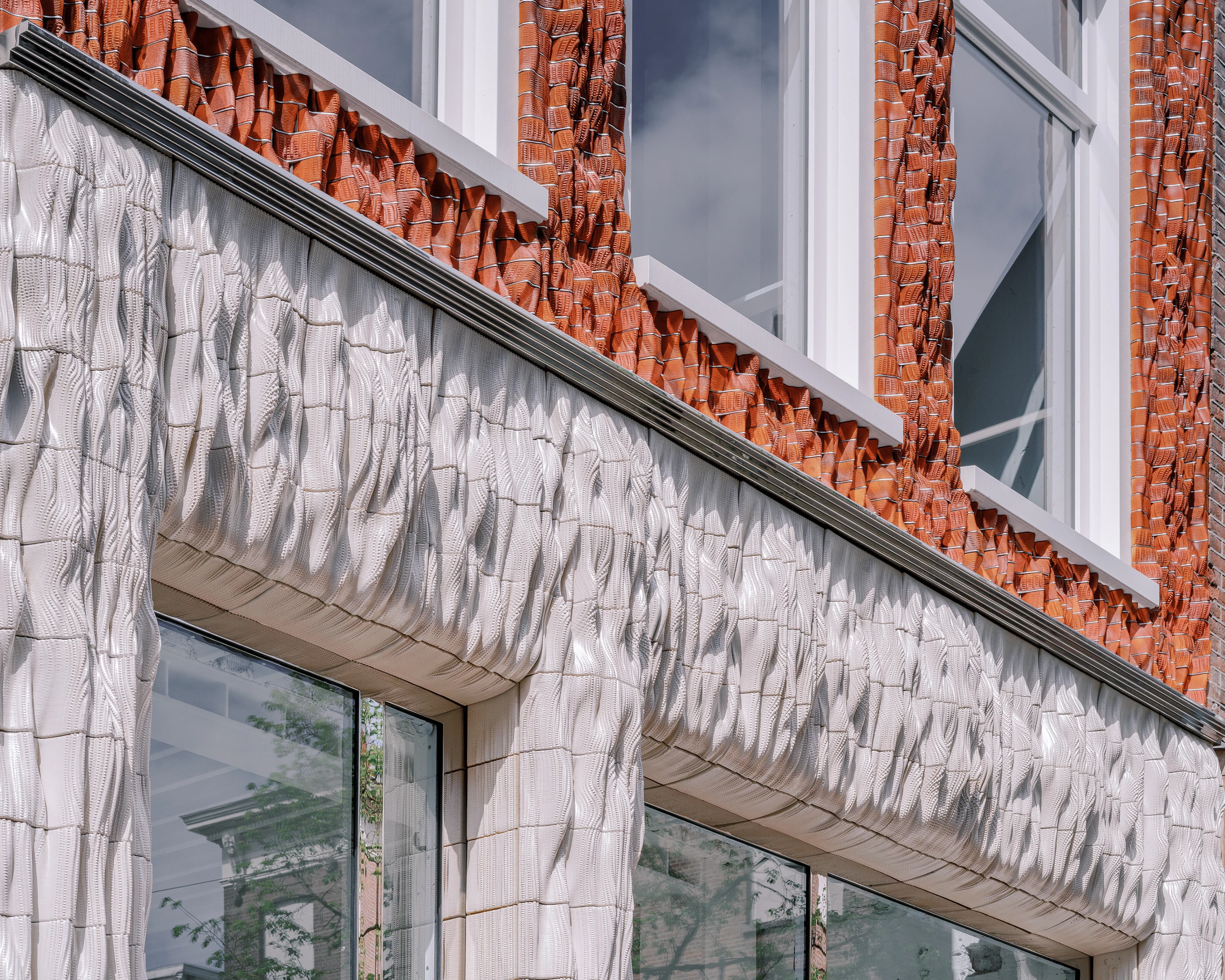As 3D-printed architecture continues to grow in popularity, architects and designers are finding more and more creative uses for the cutting-edge tech. A new project by Studio RAP is the latest example of this and uses a 3D printing system to transform a retail store with a decorative knitted fabric-like ceramic facade.
The project, named Ceramic House, is located in a busy area of Amsterdam, the Netherlands, and involved giving a luxury boutique store a facelift, helping it stand out among the surrounding buildings.
Influenced by textiles, the facade is made up of 3D-printed ceramic tiles, which were produced in a similar fashion to Studio RAP's previous project, New Delft Blue. The firm used an industrial robotic arm fitted with a custom extruder, which pushed a clay based mixture out of a nozzle in layers, according to a predetermined pattern, to build up each clay tile. The tiles measure roughly 40 x 20 cm (15.5 x 7.5 in) each and were glazed and fired to create a ceramic finish before being attached to the facade. On the lower floors, the tiles are finished in white, while the higher floors are made up of three shades of red.

"Studio RAP has replicated the silhouette of the original facade, continuing the characteristic tripartite structure of the street and maintaining the overall character of the site," explained the firm. "The scale, size, type, and color of the ornaments and materials are all carefully synced with the neighboring buildings to allow a seamless integration of traditional and contemporary architecture.
"The design of the facade features intricate layers inspired by textiles – elegant creases, interlooping yarns, and stitch patterns. Its organic, wave-like quality changes as viewers approach the design from different angles. Gradually, as the line of vision moves, new elements within the custom ceramic tiles are unveiled, resulting in a luxury boutique that harmonizes with its historical environment while standing out among the surrounding buildings."
Source: Studio RAP









